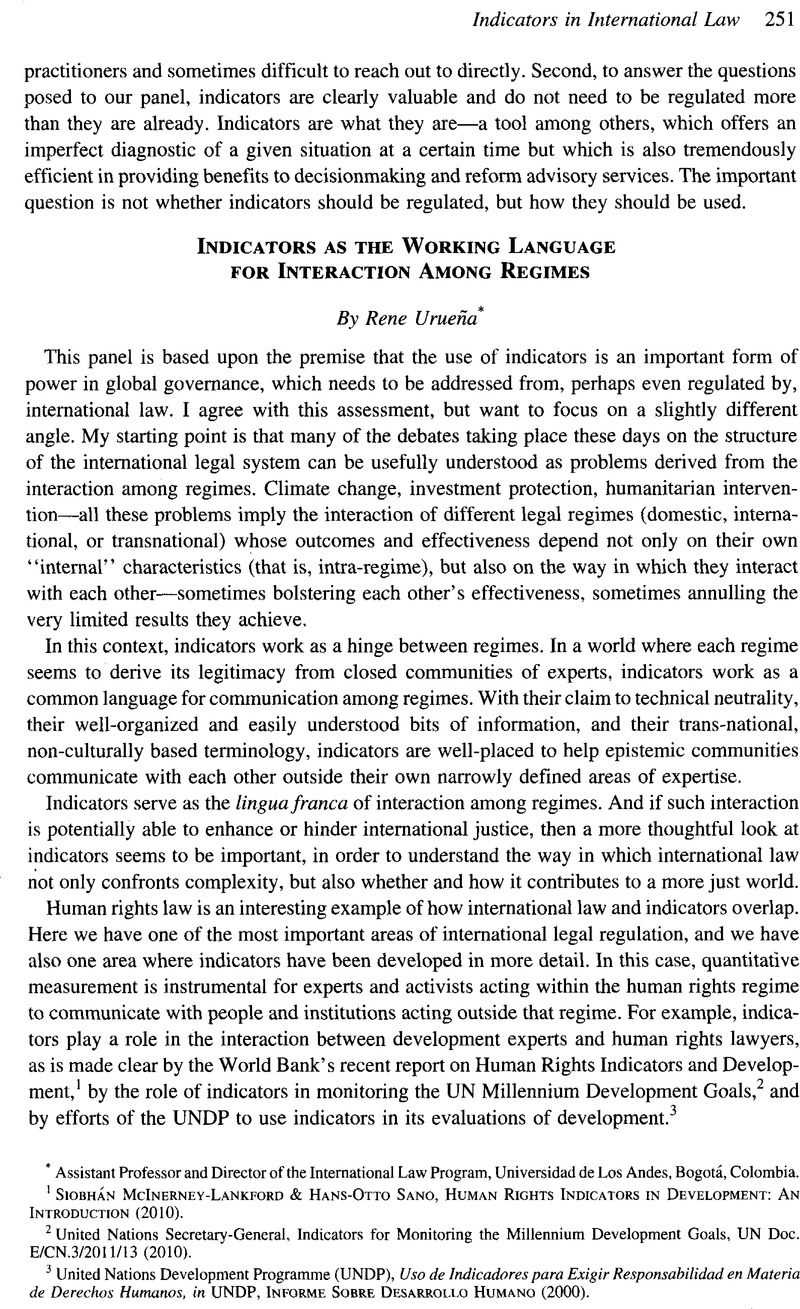No CrossRef data available.
Article contents
Indicators as the Working Language for Interaction Among Regimes
Published online by Cambridge University Press: 28 February 2017
Abstract

Information
- Type
- Indicators in International Law
- Information
- Copyright
- Copyright © American Society of International Law 2012
References
1 Siobhán McInerney-Lankford & Hans-Otto Sano, Human Rights Indicators in Development: an Introduction (2010).
2 United Nations Secretary-General, Indicators for Monitoring the Millennium Development Goals, UN Doc. E/CN.3/2011/13 (2010).
3 United Nations Development Programme (UNDP), USO de Indicadores para Exigir Responsabilidad en Materia de Derechos Humanos, in UNDP, Informe Sobre Desarrollo Humano (2000).
4 Inter-American Commission of Human Rights, Lineamientos para la Elaboración de Indicadores de Progreso en Materia de Derechos Económicos, Sociales y Culturales. Doc. No. 14. (July 19, 2008).
5 Corte Constitucional de Colombia. Auto 226 de 2011, at 12-14.
6 Ginsburg, Tom, Pitfalls of Measuring the Rule of Law, 3 Hague J. On Rule L. 269 (2011)Google Scholar.

